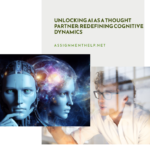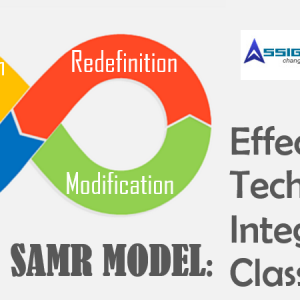GPT-4V: What does it Mean For Education and Classrooms ?
In the ever-evolving landscape of educational technology, a groundbreaking innovation has emerged, poised to transform classrooms worldwide. Enter GPT-4V, a game-changer that blends language prowess with visionary capabilities, opening doors to an entirely new realm of learning experiences. But what does this latest marvel mean for education and classrooms?
So imagine GPT-4V as a super smart helper for teachers. It’s like having a friend who’s really good with words and pictures. GPT-4V can understand not only what we say but also what we show in pictures.
For teachers, this means having a cool tool that can make learning more exciting. Think of it like having a magical assistant who can explain things using both words and pictures. So, when a teacher wants to explain something in class, this helper can show images and describe them in a way that everyone understands better.
Imagine learning about animals: GPT-4V could show pictures of different animals and tell you interesting facts about them. It’s like having an encyclopedia that talks and shows pictures, making learning more fun and easier to understand for everyone in the classroom.
In simple words, GPT-4V can make teaching more interactive and fun by using both words and pictures to explain things. It’s like having a smart friend who can help make learning a lot more exciting! Let’s embark on a journey to unravel its potential and discover how GPT-4V is set to revolutionize the way we teach and learn.
Brace yourselves for an exploration into a future where language meets vision, reshaping the very fabric of education as we know it. This development of GPT-4V, which integrates vision capabilities into language models, holds substantial implications for classrooms and education technology:
Enhanced Learning Resources
- Visual Learning Integration: It enables educators to incorporate visual elements seamlessly into lessons, catering to diverse learning styles and enhancing comprehension.
- Personalized Learning: GPT-4V’s ability to analyze image inputs can facilitate personalized learning experiences by tailoring content based on visual cues and individual preferences.
Interactive Teaching and Assessment
- Interactive Lessons: Teachers can create more interactive sessions by using GPT-4V to explain visual content, encouraging student engagement and participation.
- Assessment Diversity: Assessments can evolve to include image-based questions, assessing not just textual comprehension but also visual understanding and interpretation.
Accessibility and Inclusivity
- Catering to Varied Learners: Visual aids provided by GPT-4V can benefit students with different learning needs, including visual learners or those with specific learning disabilities.
- Adaptable Content: Educational materials generated by GPT-4V could be customized to suit individual learning paces and styles, fostering an inclusive learning environment.
Starting in March 2023, BeMyEyes collaborated with OpenAI to create BeMyAI, integrating GPT-4V into the BeMyEyes platform. This tool aimed to describe the visual world for individuals who are blind or have low vision. BeMyAI used the GPT-4V technology to provide descriptions of images taken by users’ smartphones. They conducted a pilot phase from March to early August 2023, initially with around 200 beta testers who had visual impairments. By September, the beta testing group had expanded to 16,000 users, receiving around 25,000 image description requests daily.
The testing revealed both the potential and limitations of BeMyAI. While it provided unprecedented tools for blind and low-vision users, there were issues such as errors, occasional hallucinations, and limitations in accuracy. Beta testers expressed concerns about the model making confident yet incorrect assertions. For instance, one tester mentioned receiving inaccurate information confidently.
However, BeMyEyes made noticeable improvements over the testing period, reducing the frequency and severity of errors and hallucinations. Beta testers expressed a strong desire for BeMyAI to describe facial and visible characteristics of people they encounter or see in images. This capability poses challenges related to privacy, biases, and potential misuse. BeMyEyes acknowledged the significance of this feature for users but is working on mitigations to describe faces without identifying individuals by name, ensuring a more equitable experience without compromising privacy.
Ethical and Safety Considerations
- Content Moderation: With the integration of image inputs, there’s a heightened need for content moderation to ensure all visuals provided or generated are appropriate for educational settings.
- Safety Protocols: The safety protocols outlined suggest that measures have been taken to mitigate potential risks associated with the use of visual data within educational contexts.
Challenges and Considerations
- Training and Implementation: Educators might require training to effectively leverage GPT-4V in classrooms, ensuring optimal integration and usage.
- Privacy and Data Protection: Handling image inputs raises concerns about data privacy, especially when dealing with student-generated or sensitive visual content.
Implications for Education Technology and Future Classrooms:
- Accessibility in Education: Tools like BeMyAI could revolutionize accessibility in classrooms, allowing visually impaired students to access visual content through descriptions, enhancing their learning experiences.
- Integration of AI Assistance: This highlights the potential of AI in aiding students with disabilities, emphasizing the need to harness AI capabilities responsibly within educational technology.
- Ethical Considerations: The challenges faced by BeMyAI underscore the importance of ethical use of AI in educational tools, particularly in ensuring accuracy, privacy, and mitigating biases.
- Future Developments: Advancements in AI-powered accessibility tools could lead to more inclusive educational technology, catering to diverse learning needs and fostering equitable learning environments.
The BeMyAI project showcases the immense potential of AI in addressing accessibility challenges in education. However, it also emphasizes the necessity of responsible implementation, continual improvements, and ethical considerations when integrating AI into educational technology.
Impact on Educational Technology
GPT-4V’s multimodal capabilities pave the way for a more immersive, personalized, and engaging educational experience. The fusion of language and vision in education technology expands the possibilities for interactive learning and inclusive teaching practices. However, responsible implementation, addressing ethical considerations, and ensuring safety and privacy are crucial steps in harnessing these advancements for the benefit of education. Integrating GPT-4V into classrooms requires a balanced approach that maximizes its potential while safeguarding against potential risks.

